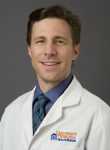Abuse and Neglect, Genetic Research, Schizophrenia, UCSD / 06.01.2017
Schizophrenia: SynCav1 As Potential Target To Restore Neuron Function
MedicalResearch.com Interview with:
Brian P. Head, MS, PhD
Associate Professor, UCSD
Research Scientist, VASDHS
Department of Anesthesiology
VA San Diego Healthcare System
San Diego, CA 92161-9125
MedicalResearch.com: What is the background for this study? What are the main findings?
Response: DISC1 is a schizophrenia associated gene originally identified in a Scottish family. DISC1 protein is highly expressed in the developing brain and in the dentate gyrus of the adult hippocampus, and is involved in neuritogenesis and neuronal signaling. DISC1 is located in multiple intracellular locations including axons and synapses, and loss of DISC1 function causes deficits in neural development, neuronal proliferation, axonal growth, and cytoskeleton modulation, which are consistent with abnormal neural development in schizophrenia.
SynCav1 means synapsin-driven caveolin construct. Synapsin promoter is neuronal specific which allows us to increase caveolin expression-specifically in neurons. We have previously shown that SynCav1 increases neuronal signaling and dendritic growth and arborization in vitro (Head BP JBC 2011), and when delivered in vivo augments functional neuroplasticity and improves learning and memory in adult and aged mice (Mandyam CD Biol Psych 2015).
Since loss of DISC1 function equates to schizophrenic-like symptoms, then decreased DISC1 expression in Cav-1 KO mice agrees with this premise. Thus, loss of Cav-1 increases their likelihood of developing schizophrenia-like symptoms. Because re-espression of Cav-1 restored DISC1 expression as well as expression of key synaptic proteins, this proof-of-concept findings not only builds upon our previously results demonstrating that Cav-1 is critical for neuronal signaling and functional synaptic plasticity but also strongly links Cav-1 with maintaining normal DISC1 expression levels and potentially attenuating schizophrenia-like symptoms.
(more…)
















